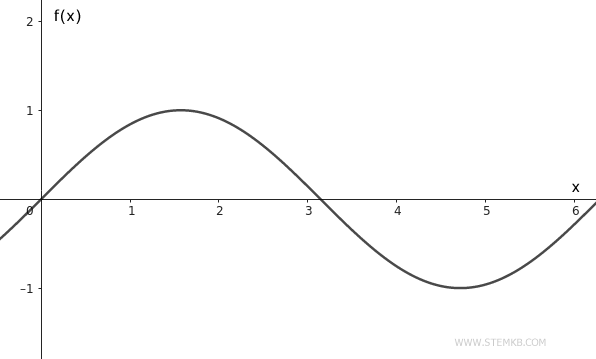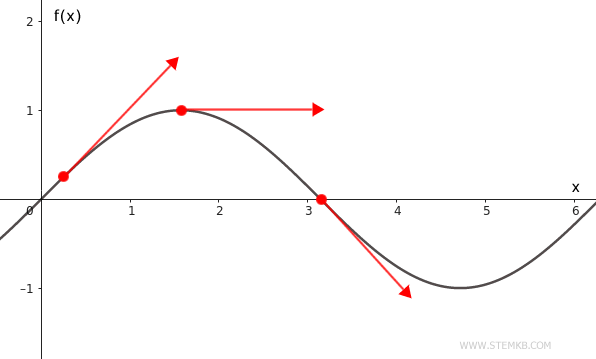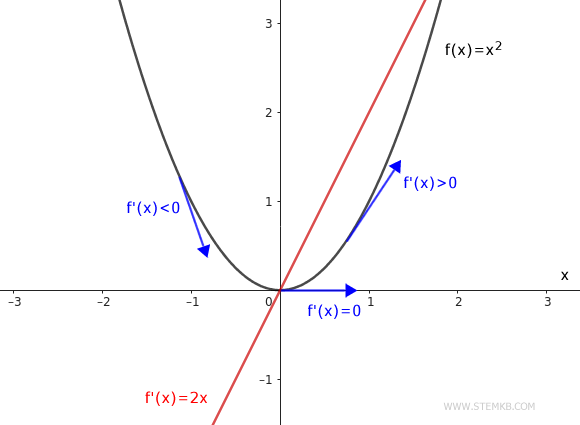
The Derivative of a Function
Imagine a mathematical function as a mysterious character in a story, and its derivative as the narrator who reveals how this character reacts to the shifting currents of the plot, which are changes in the independent variable.
The derivative, which measures the rate of change of a function at a particular point, is a cornerstone of differential calculus - a linchpin concept that holds the whole structure together.
You might be wondering, "Why should I care about derivatives?" Well, they're not just abstract mathematical concepts. They have a host of practical applications across various fields. They're like the Swiss army knife of the scientific world. In physics, they help you calculate velocity based on the laws of motion. In economics, they let you peer into the future to see if a market is soaring or plummeting. These are just the tip of the iceberg. The uses of derivatives extend across all scientific and technical disciplines, from engineering to astrophysics.
A Practical Example
Let's delve into a hands-on example.
Picture a function graphically resembling a wave.

Sometimes the wave rises, sometimes it plateaus, and at other times it descends.
Thinking geometrically, the derivative acts like a compass, guiding you to the slope of the tangent line to the function at the point you're examining.

As you move from one point 'x' to another, the derivative changes, much like how the landscape changes as you travel from city to countryside.
How is a Function's Derivative Calculated?
The calculation of a function's derivative hinges on the concept of a limit.
In fact, the mathematical definition of a derivative of a function f(x) at a point x=x0 is expressed as the limit:
$$ f'(x_0) = \lim_{\Delta x \rightarrow 0} \frac{f(x_0 + \Delta x) - f(x_0)}{\Delta x} $$
If this limit exists, then the function is said to be differentiable at x0, and the value of this limit is the derivative of f at x0.
Here's a practical example for you.
Consider the function f(x)=x2
$$ f(x) = x^2 $$
To calculate its derivative, you should use the previous limit at a general point x within the function's domain.
$$ f'(x) = \lim_{\Delta x \rightarrow 0} \frac{f(x + \Delta x) - f(x)}{\Delta x} $$
Substitute f(x)=x2 into the equation
$$ f'(x) = \lim_{\Delta x \rightarrow 0} \frac{ (x + \Delta x)^2 - x^2}{\Delta x} $$
$$ f'(x) = \lim_{\Delta x \rightarrow 0} \frac{ x^2 + 2x \Delta x + \Delta x^2- x^2}{\Delta x} $$
$$ f'(x) = \lim_{\Delta x \rightarrow 0} \frac{ 2x \Delta x + \Delta x^2}{\Delta x} $$
$$ f'(x) = \lim_{\Delta x \rightarrow 0} 2x + \Delta x $$
As Δx tends to zero, the limit equals 2x
$$ f'(x) = \lim_{\Delta x \rightarrow 0} 2x + \Delta x = 2x $$
The function f'(x)=2x is the derivative of the function f(x)=x2 and it allows you to identify the slope of the function at any point.
$$ f'(x) = 2x $$
Depending on the sign of the derivative function f'(x), you can deduce the trend of the function f(x).
- If the first derivative is positive f'(x)>0, the function f(x) is increasing
- If the first derivative is zero f'(x)=0, the function f(x) is constant
- If the first derivative is negative f'(x)<0, the function f(x) is decreasing
When you observe the two functions f(x) and f'(x) on the same graph, all of this becomes clearer.

Leibniz Notation
To represent derivatives, you can also use a more advanced notation, called "Leibniz notation".
In this notation, the derivative of a function y = f(x) with respect to x is denoted as dy/dx.
$$ f'(x) = \frac{d \ f(x)}{ dx } $$
This notation is particularly useful when you're dealing with multivariable functions or when you want to calculate higher order derivatives, which are derivatives of derivatives.

